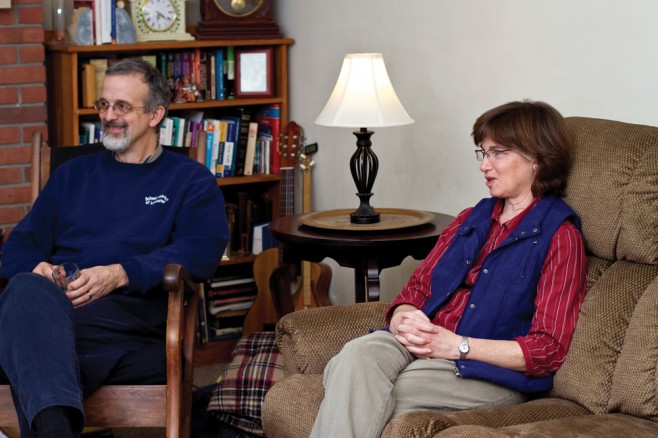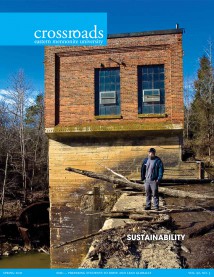
Darrell and Sylvia Yoder, Both '81 Grads, have taken the small-steps approach toward sustainability in their household in Lancaster, Pennsylvania. When the old oil furnace gave out, the Yoders installed a geothermal heat pump. Other measures: Replacement windows. Better attic insulation. Solar tubes for more natural light. Laundry drying on the line. Cloth grocery bags. One car for the family of four. A big vegetable garden. Says Darrell: “Small steps make a big difference … and (they) make your life richer.”
At the Landis Homes community in Lititz, Pennsylvania, Dr. Richard ’60 and Ruth Slabaugh ’63 Weaver were the first couple to move into one of nearly two dozen cottage homes built with a number of simple green features. These include rain barrels, tubes to let sunlight into dark areas of the house, geothermal heat pumps, and solar-powered attic fans. Richard and Ruth both spoke at the groundbreaking ceremony for the new, sustainability-focused part of the Landis Homes campus. Linford Good ’80, vice president of planning and marketing at Landis Homes, has led the effort to use greener building methods at the retirement community.
In Philadelphia, Carol and Timothy Martin Johnson, both ’82 grads, commute to work by public transportation, bicycles or walking; when they need to drive, they use their trusty old Corolla – 260,000 miles and counting. In January 2011, they put solar panels on the roof of their 100-year-old house, which should provide at least half their electricity. The Johnsons rent out the third floor of their house, attend a church that shares space with five other congregations, and allow an urban beekeeper to keep two hives in their back yard. The sharing and interdependence that accompany urban living, Carol writes, present “challenges, but also endless creative possibilities in which we find much joy!”
“There are a lot of little things that each one of us can do in our own homes to save the planet,” wrote Martha Ann Burgard ‘66, of Gadsen, Alabama, in a letter describing the simple things she’s done in her own home. In condensed form:
Clean with white vinegar and baking soda, because they work as well as toxic chemicals. Use a clothesline. White metal roofs reflect more sunlight and keep a house cooler. Heat with a wood stove. Wear a hat. Bundle up. Invest in a down comforter. Shop at thrift stores and yard sales. Repurpose old things. Try treating ailments with home remedies. Compost. Mulch. Turn your lawn into a wildflower meadow. Collect rainwater for the garden. Grow your own food. Buy local produce. Cook in bulk, divide into meal-sized portions, freeze for later. Avoid processed food. Buy eggs in cardboard cartons, not styrofoam, because cardboard is a good fire starter and is compostable. Don’t dry-clean clothes. If you can’t wash it, you don’t want it. Make bags and purses from fabric scraps. Use some. Give some away as gifts. Volunteer. Teach middle-schoolers how to build birdhouses.
Says Burgard: “This is the civilized way to live, in harmony with nature, not fighting it, not destroying it, but enjoying it, communing with it.”
